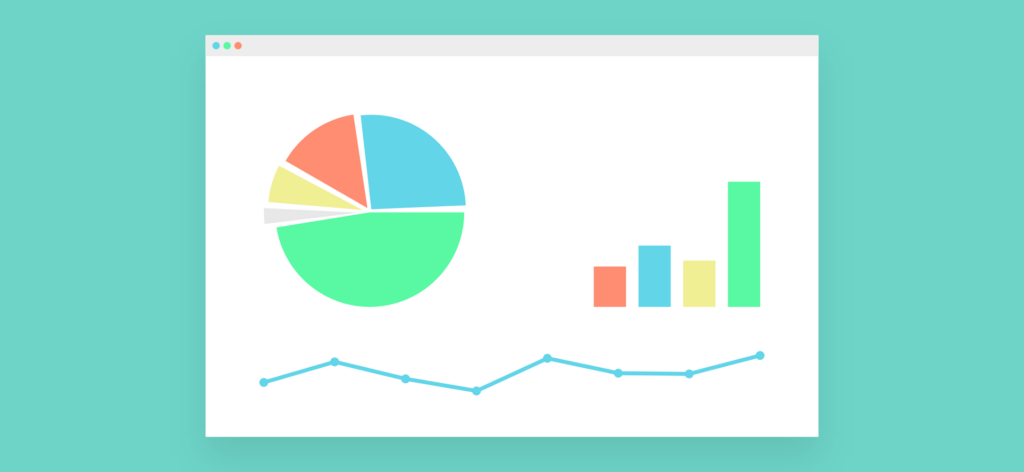Business analytics in marketing has never been more critical. Marketers use big data to find insight into their customers and how they can compete in a crowded market. Visualization tools help them do this by arranging and depicting the large amounts of information marketers gather.
There are a lot of choices when it comes to picking the right tool for your marketing needs. Here are some low-code/no-code standouts that allow marketers to create an accessible data dashboard, with an excellent experience, at a fair price.
CDP.com Perspective: Data Visualization Tools and Your Customer Data Platform
Some customer data platforms (CDPs) come with the capability to easily integrate with data visualization tools. This allows marketers to easily transform customer insights into other types of data formats. It’s important to understand your CDP’s capabilities and how these two types of data tools can work together to elevate your marketing and data analytics initiatives.
Top Data Visualization Tools for Marketing Teams and Agencies
1. Microsoft Power BI
Microsoft Power BI simplifies the data visualization process with its easy-to-use interface and features designed specifically for marketers.
Microsoft Power BI enables marketers to gather, analyze, visualize, and share data. The flexible self-service tool has minimal initial training requirements and connects with other Microsoft applications.
The abundance of built-in capabilities, such as filtering and interactive dashboards, makes finding the required data more straightforward. Using the library of connectors, you can easily connect your data sources from Twitter, Google Analytics, and other sources.
Additionally, you may add visuals to any document created with Microsoft Office, giving you more control over your market reports’ final appearance.
Pros
- The platform has an easy-to-use interface.
- You can learn about the functioning of the software via the website’s demos.
- Market analysts can use the platform to track data, produce reports and infographics, and monitor real-time data.
Cons
- The platform has constrained capabilities for large-scale data management.
2. Tableau
Tableau makes it easy to organize, visualize and share your most important data. The tool’s intuitive drag-and-drop interface lets you quickly identify meaningful patterns and discover new insights. With Tableau, you can gain access to unlimited licenses. Additionally, you can publish or share your reports by giving out an accessible link.
Creating easy-to-read and understandable charts makes it easier for your audience to absorb the information. Numerous functions, like multidimensional scaling, data blending, and filtering, are available in Tableau.
Pros
- The tool is easy to use.
- Top brands like Lenovo utilize the platform, which raises its credibility.
- Its ability to connect databases using SQL allows users to connect multiple data sources.
- There are no hidden fees.
Cons
- Acquiring more licenses on top of the pricing plans costs you more.
3. Qlik Sense
Qlik Sense is a data visualization platform that enables marketers to interact with their data analytics to assist them in making better decisions. Marketers can quickly produce interactive visualizations using Qlik Sense that they can show to clients and coworkers.
With the real-time analytics data pipeline, Qlik combines data and analytics effortlessly. It allows users to locate pertinent data quickly, enhance it, and produce derivative data.
The platform enables marketers to find and comprehend information from any location using top-notch analytics. You can wire downstream automated actions to take advantage of every business opportunity.
Pros
- Brands like Samsung rely on Qlik Sense, demonstrating the app’s reliability.
- The platform provides a chatbot and contact information, enabling it to address client issues.
Cons
- The tool can be choppy when dealing with large data sizes.
4. Zoho Analytics
Zoho Analytics is a platform for data visualization that aids in tracking and analyzing data for marketers. The agency provides several features, such as the capacity to design unique reports, dashboards, and graphs, like waterfall charts.
Data integration is straightforward because Zoho Analytics connects with other Zoho products. For instance, users can access submitted files and turn them into interactive charts by logging into their Google accounts. Users can also quickly export data from the dashboard into PowerPoint or Microsoft Excel slide shows.
Pros
- Developing KPIs enables users to evaluate the effectiveness of their teams.
- The user interface of Zoho Analytics is simple.
- The platform provides several capabilities, such as advanced analytics and links to other databases.
Cons
- Applications that are not under Zoho Analytics are not compatible with the platform.
5. Google Charts
Google Charts allows you to generate charts based on your data. These charts’ zoomability and interactivity are their best qualities. The platform enables users to engage with your visual data, which keeps them on your webpage longer.
The ability to design unique charts and graphs, share charts and data with others, and export charts and data for additional analysis are some of Google Charts’ primary features. Use this tool to create exciting data visualizations with interactive controls and animation to keep your audience interested and satisfied.
Pros
- Google Charts lets your audience engage with your data.
- It has a large variety of templates for generating data visualizations.
- Google charts are simple to integrate into other programs.
- The tools are free to use.
Cons
- The platform doesn’t have a mobile app.
6. Infogram
Infogram lets you utilize templates to design your visualizations, enabling you to perfect your data visualization.
The tool can integrate real-time data into your graph, ensuring that the data is constantly updated. This function keeps your customers informed of any new information regarding the products, services, and market offerings.
The platform also lets you add personalized elements to your charts, such as charts, maps, and videos. Personalized items allow you to use interactive media to improve your content and make it more appealing to your target audiences. Infogram offers Basic, Pro, Business, Team, and Enterprise pricing plans.
Pros
- It is a simple-to-use software for data visualization and infographics.
- You produce more intriguing data visualizations for your company by utilizing Infogram.
Cons
- Infogram is unsuitable for data-intensive graphics.
Getting Started with Data Visualization in Marketing
An accessible data dashboard understandably conveys complex information. Websites with good visualizations make more money because they can better show clients what they need to know. They also provide more information than text-based websites, so marketers use presentation tools to give their ideas additional credibility and impact.



